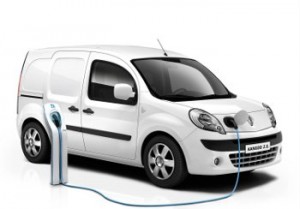 Renault has been one of the most enthusiastic advocates of electric power in the European car and van market, and as you’d expect, the organs of French government have backed this — in this case through France’s state-owned postal service, La Poste, which operates nearly 25,000 means of electric transport out of a total fleet of 69,000 vehicles.
Renault has been one of the most enthusiastic advocates of electric power in the European car and van market, and as you’d expect, the organs of French government have backed this — in this case through France’s state-owned postal service, La Poste, which operates nearly 25,000 means of electric transport out of a total fleet of 69,000 vehicles.
Among La Poste’s electric fleet are 5,000 light vans, 1,000 electric quad bikes, 18,000 electrically-assisted bicycles and — most recently — 100 STABY electric three wheelers. Of course, as this is France, all these vehicles are supplied and built by French companies — Renault for the vans, Ligier for the quads and three wheelers and Cycleurop and Arcade for the bikes.
Looking at these figures, you can only draw two possible conclusions: electric vehicles are a collosal white elephant, or that we are on the verge of seeing electric vans and delivery vehicles join the mainstream.
As I’ve written many times before, my money is on the latter: while electric cars remain impractical for many drivers, electric vans make perfect sense for a great many organisations. Take Royal Mail, for example, which is continuing its love affair with diesel: all the Royal Mail sorting offices I’ve ever seen have secure off-road parking for all of their vans, which are only used during the day, mostly on regular, low-mileage routes that are well within the 70km daily range La Poste claims to get from its Renault electric vehicles — and an ideal setup for overnight charging.
On 31 October, La Poste took delivery of the 5,000th Renault Kangoo Z.E. to roll off Renault’s production lines, and the two firms’ chief executives signed a new partnership, aimed at extending their cooperation on eco-mobility solutions. The two groups will conduct a watch, carry out tests, and dialogue on new vehicles measuring up to 17 m3 for mail use and in respect of competition law. Several new ideas have already emerged, including in the 8 m3 segment, the “service” vehicle segment and the small urban vehicle segment.
